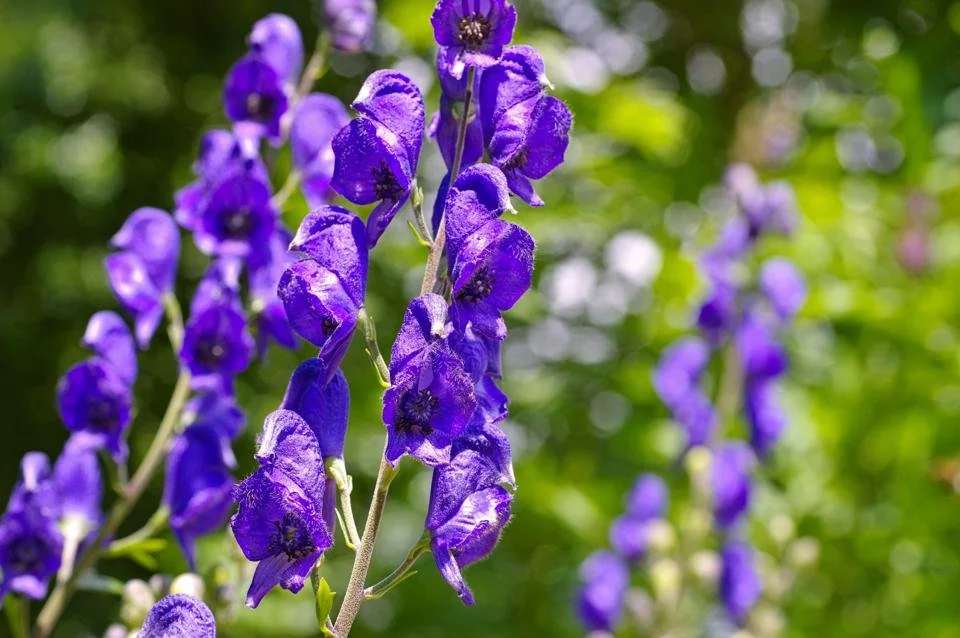
Aconite napellus
Common Name: Monkshood or Wolfsbane (“purple poison”)
Family: Ranunculaceae (Buttercup family)
Parts used: Root
Constituents: Diterpenoid alkaloids (aconitine)
Taste/smell: Bitter and acrid
Actions
Anodyne
Antineuralgic
Antipyretic
Diaphoretic
Sensory and Motor Depressant
Antiseptic
Antirheumatic
Sedative (in large doses)
Uses
Anodyne:
Pain (i.e. pain in ovarian cysts, sciatic pain, etc.)
Antineuralgic:
Neuralgia
Trigeminal neuralgia
History
Used since ancient times as a poison used on spears and arrows for hunting and battle
Called “wolfsbane” as it was believed to repel werewolves and real wolves
Used in Ancient romans as a method of execution
Contraindications
Pregnancy and lactation
Toxic in high doses
Adverse Effects
Nausea and vomiting
Headaches
Miosis (pinpoint pupils)
Hypotension
Chest pain
Chills
Pale
Collapse
Paresthesia
Dyspnea (shortness of breath)
Ventricular fibrillation
Toxicity
Highly toxic when used internally. Narrow therapeutic window. Overdose is potentially lethal.
Interactions
None known
References:
Brinker, Francis J. Herbal Contraindications and Drug Interactions plus: Herbal Adjuncts with Medicines. Eclectic Medical Publications, 2010.
Kaufmann, Taylor. NPLEX II Study Guide. Wild Brilliance Press, 2019.
Lun, Vincent, et al. Core Knowledge for NPLEX 2. 1st ed., Marano Publishing Incorporated, 2014.
Marciano, Marisa, and Nikita A. Vizniak. Evidence Informed Botanical Medicine. Professional Health Systems Inc., 2015.
Sherman, John. The Complete Botanical Prescriber. Four Seasons Pub.
Skenderi, Gazmend. Herbal Vade Mecum: 800 Herbs, Spices, Essential Oils, Lipids, Etc., Constituents, Properties, Uses, and Caution. Herbacy Press, 2004.
Tilgner, Sharol. Herbal Medicine: From the Heart of the Earth. Wise Acres, 2020.





